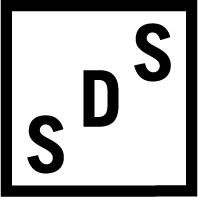THE
END


No. 69
final issue
Emigre No. 68
American
Mutt
Barks
in the
Yard


David Barringer

Dear Emigre,
I hope you discover redeeming value in this rude bulk of a submission. I offer it for publication in Emigre. I can imagine it literally nowhere else. The best I can say on its behalf is that I am no longer the same designer I was when I began writing it three weeks ago. Emigre 65 & 66 triggered an imaginative gatling gun, and I am exhausted and grateful that the shooting is over.Entitled, "American Mutt Barks in the Yard," the essay is 34,940 words long. It is ambitions and reckless and impassioned. During its composition, I did not intend it as a concerted response to the laments in your publication over the lack of cross-disciplinary/extra-disciplinary writing on graphic-design theory. Now that the composition is over (maybe), I still do not know if it represents at all what anyone had in mind. Maybe, after all this, it is still only a start.
I hope that the essay earns your interest beyond the first personal and poetic sections; the majority oconsists of critical thinking, vividly expressed. I understand that your time is precious and that my essay presumes to take up a good deal of it. I thank you for your consideration.
Sincerely,David Barringer
Graphic design vs. style, globalism, criticism, science authenticity and humanism

Michael Schmidt
Peter Bilak
Katherine McCoy
Randy Nakamura
Dmitri Siegel
Kenneth Fitzgerald
Anthony Inciong
Mr. Keedy
David Cabianca
Max Kisman

No. 67
As we continue to fall headlong into the market's velvet embrace, we leave behind values and concerns that make our work a force for positive change. This is an enormous price to pay for the steady stream of comforts granted us by a market pleased to know we are on its side. The notion that one can work without edifying one's self is an unforgivable conceit.
-Anthony Inciong
Nudging
Graphic
Design


No. 66

Armin Vit | Kenneth FitzGerald | Ben Hagon | Mr. Keedy | David Cabianca | Eric Heiman | Kali Nikitas & Louise Sandhaus | Sam Potts | Lorraine Wild


Emigre
No. 65
Ian Anderson
Ben Archer
Marc Baillargeon
Michael Bierut
Adam Bilinski
David Cabianca
Michael Cina
Geoff Cook
Jordan Crane
Rob Dewey
Elliott Earls
Experimental Jetset
Patrick Fox
Rob Giampietro
Anthony Inciong
Andrew Johnsone
Mike Kippenhan
Ryan McGinness
Yogi Proctor
Scott Santoro
Carlos Segura
Natalie Shahinian
Christian Simon
Joshua Ray Stephens
Nille Svensson
Garry Trinh
Gerard Unger
Armin Vit
Trent Williams


Co-Published By
Princeton Architectural Press.

RANT

No. 64


Rick Valicenti / Kenneth Fitzgerald
Mr. Keedy / Andrew Blauvelt
Kali Nikitas & Denise Gonzales Crisp & Louise Sandhaus
Jessica Helfand & William Drenttel / Shawn Wolfe
The readers respond
